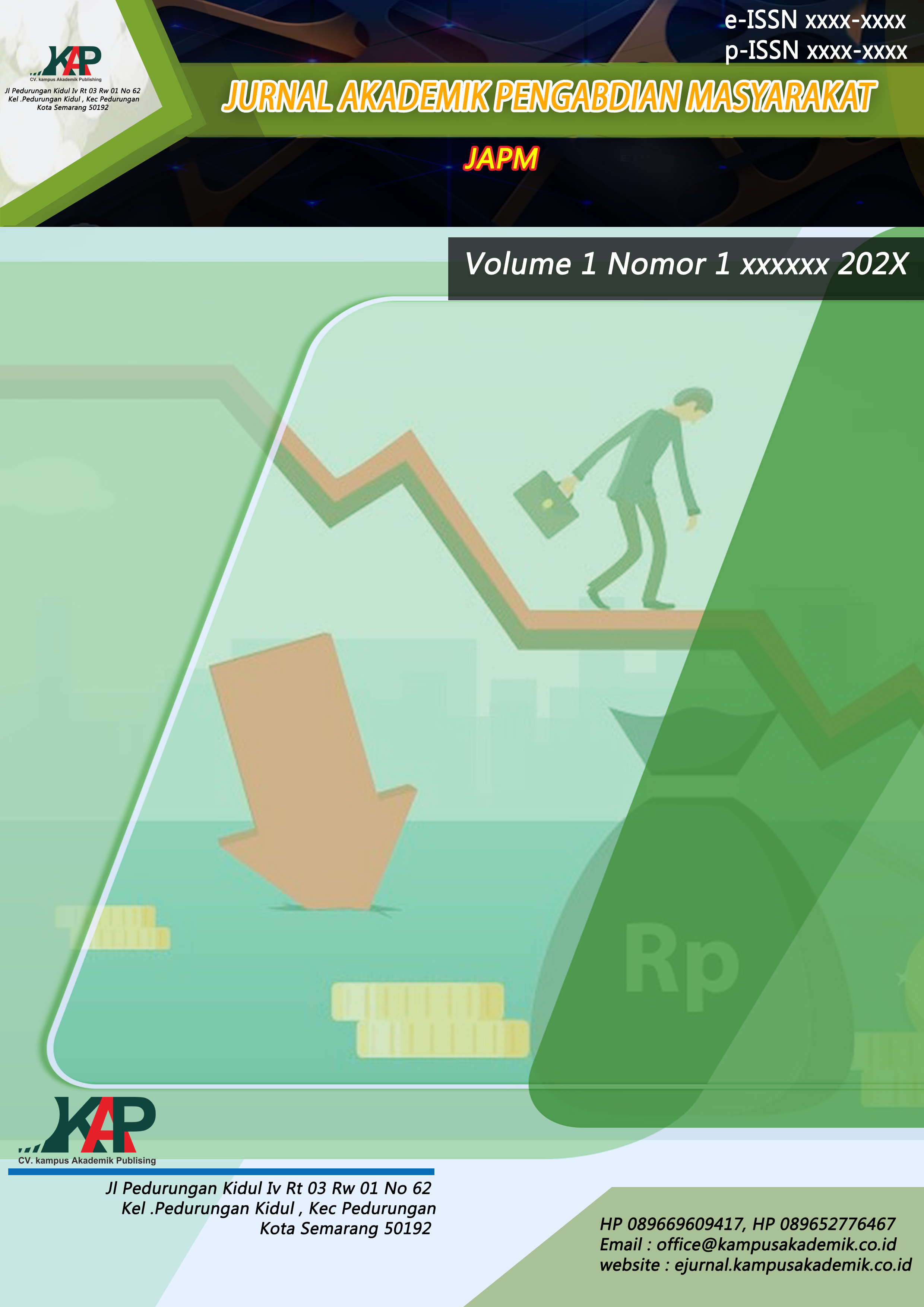PEMANFAATAN LIMBAH FASHION (FAST FASHION WASTE) MENJADI PRODUK ECO-FASHION BERBASIS EKONOMI SIRKULAR UNTUK MENDORONG GAYA HIDUP BERKELANJUTAN DI KALANGAN MAHASISWA
DOI:
https://doi.org/10.61722/japm.v3i3.4615Keywords:
Ekonomi Kreatif, Kewirausahaan, Produk Lokal, Pelatihan, BengkalisAbstract
The creative economy is a strategic sector in driving local economic growth. Bengkalis Regency has great potential in developing the creative economy, especially through unique local products. However, the limited knowledge and skills of business actors are the main challenges. This study aims to design and implement a local product-based entrepreneurship training program in Bengkalis District. The method used is a participatory approach by involving local business actors in every stage of training. The results show a significant increase in participants' understanding of business management, digital marketing, and product innovation. This program is expected to be a model for empowering the creative economy in other areas.
References
Ellen MacArthur Foundation. (2021). Circular economy in fashion.
Firdaus, R., Mulyani, E., & Hapsari, R. (2022). Pendidikan lingkungan hidup berbasis proyek untuk mahasiswa. Jurnal Pendidikan Lingkungan, 14(2), 125-134.
Kusumarini, Y., & Setiawan, A. (2022). Re-TexBoard: Interior Element Product Creativity from Fast Fashion Recycle Materials in the Context of Circular Economy Development. Global Conference on Business and Social Sciences Proceeding, 14(2), 1. https://doi.org/10.35609/gcbssproceeding.2022.2(69)
Moreira, S., & Marques, A. M. D. R. (2023). A New Life for Textile Waste – Upcycling in a Fashion Collection (pp. 263–271). https://doi.org/10.1007/978-3-031-43937-7_23
Satkiewicz, O. (2024). Rebirth: An Exploration of Circular Fashion. The Boller Review. https://doi.org/10.18776/tcu/br/7/165
Soudi, N., & Mohssine, T. (2024). The Role of Innovation in Making Fast Fashion Less Polluting. Deleted Journal, 4(6), 129–138. https://doi.org/10.62225/2583049x.2024.4.6.3406
Stella, F., Fraterrigo Garofalo, S., Cavallini, N., Fino, D., & Deorsola, F. A. (2024). Closing the loop: Analysis of biotechnological processes for sustainable valorisation of textile waste from the fast fashion industry. Sustainable Chemistry and Pharmacy, 38, 101481. https://doi.org/10.1016/j.scp.2024.101481
Geissdoerfer, M., Savaget, P., Bocken, N. M. P., & Hultink, E. J. (2017). The circular economy–A new sustainability paradigm? Journal of Cleaner Production, 143, 757-768.
Gwilt, A. (2014). A Practical Guide to Sustainable Fashion. Fairchild Books.
Katadata Insight Center. (2022). Survei Perilaku Konsumsi Fashion Muda Indonesia.
Niinimäki, K., Peters, G., Dahlbo, H., Perry, P., Rissanen, T., & Gwilt, A. (2020). The environmental price of fast fashion. Nature Reviews Earth & Environment, 1(4), 189–200.
Downloads
Published
Issue
Section
License
Copyright (c) 2025 JURNAL AKADEMIK PENGABDIAN MASYARAKAT

This work is licensed under a Creative Commons Attribution-ShareAlike 4.0 International License.












